An Australian who spent most of his life working outdoors without wearing a hat or sunscreen has issued a warning he wants everyone to take seriously.
Leigh Raaschou was a young volunteer lifeguard in Victoria and spent countless hours in the sun, resulting in the surgical removal of almost 200 skin cancers from her skin.
“As you can see from the skin grafts and the things they’ve done to me, I would have had over 100 skin cancers removed in that time, probably closer to 200,” he recently told the ABC.
Last year he had his fourth melanoma removed since 1998, the most aggressive and dangerous of all skin cancers.
“The cancer got into the bone and they had to take out my skull and put a titanium plate in,” he told the station.
‘Unfortunately, I got an infection between the plate and my brain, and had to have it removed again.
“But because of the high risk of opening me up, or bleeding in the brain and things like that, they’ve decided they’re not going to put it back in.”
“I have had all areas of my head irradiated and the doctors have said that there is no more.”
He has also undergone numerous bouts of chemotherapy, which has left him with diminished vision and hearing.
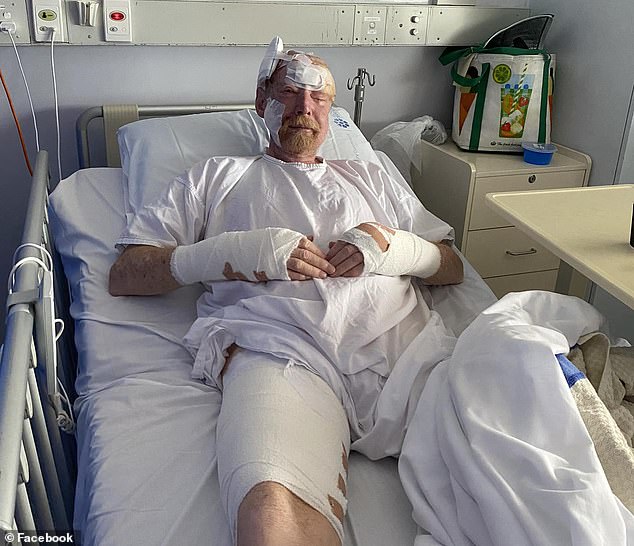
Leigh Raaschou (pictured), has revealed the terrifying magnitude of spending years in the sun without proper protection.
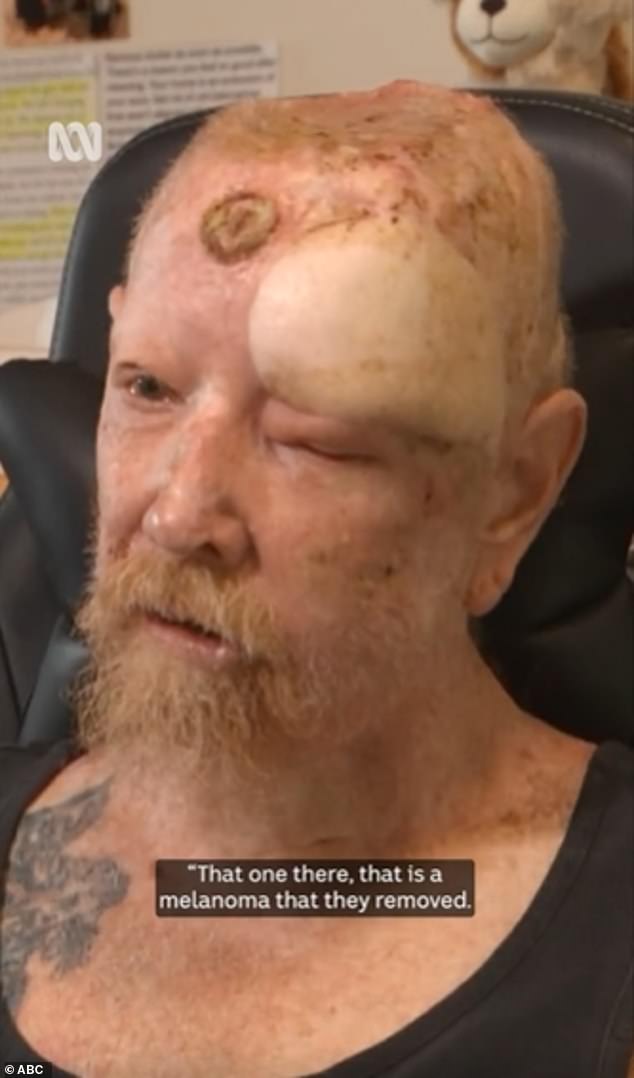

He has had nearly 200 skin cancers removed from his body, four of which were melanomas, leading to chemotherapy sessions and numerous skull surgeries.
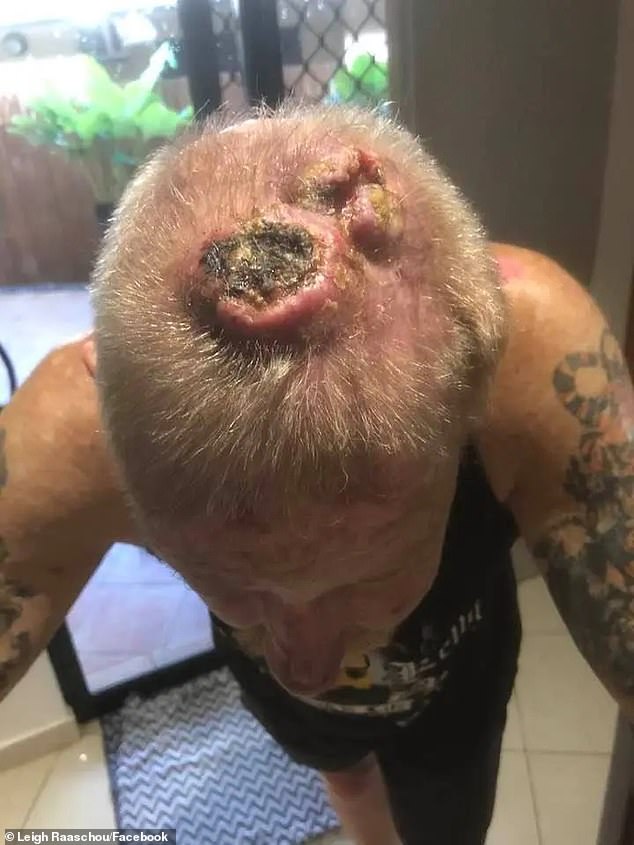

He has lost parts of his skull to cancer.
Treatment applied to “every area” of Mr Raaschou’s head has effectively eradicated any existing tumours.
But this does not guarantee that melanoma will not recur in the future, something that worries his wife.
“Everything is one day at a time, one foot in front of the other,” he told ABC, explaining his vision for the future of his health.
“If you can’t fix it yourself, there’s no use worrying because you’ll get sick, and I refuse to do that.”
Mr Raaschou spoke about a groundbreaking study from Charles Darwin University and RMIT which found that a cannabis extract has shown positive results in slowing the growth of melanoma cells.
Melanoma is known for its aggressive nature, often spreading rapidly and proving resistant to conventional treatments.
According to Nazim Nassar, co-author of the study, PHEC-66 extract also increases cell death rates.
However, the treatment is still far from being used in humans while researchers test its safety and delivery methods.
“Before we take this to human trials, we have to go through animal trials, we have to make sure that these products are safe and effective,” Dr. Nassar told ABC.
‘And more importantly, we need to find a way to deliver (PHEC-66) directly to the cell.
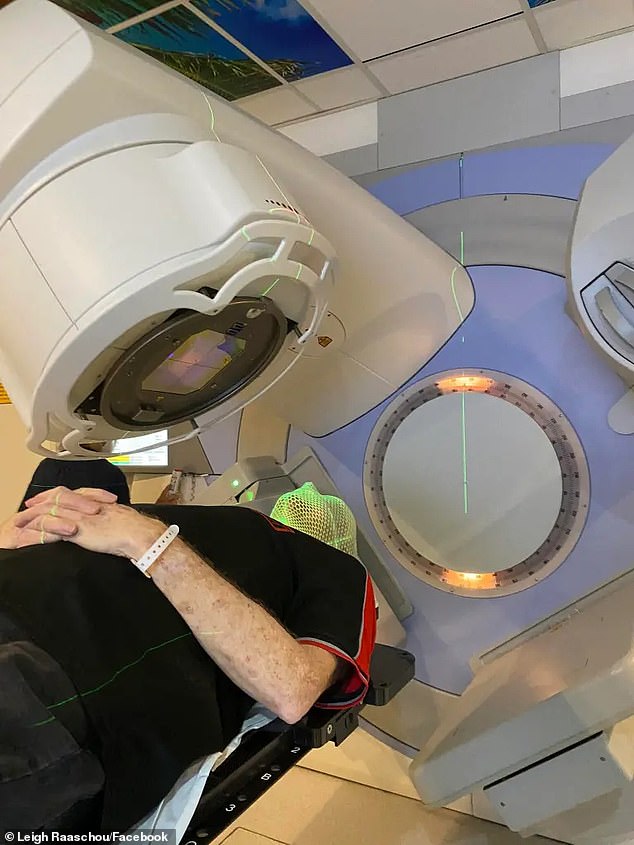

Mr Raaschou has undergone radiotherapy to almost all areas of his head.
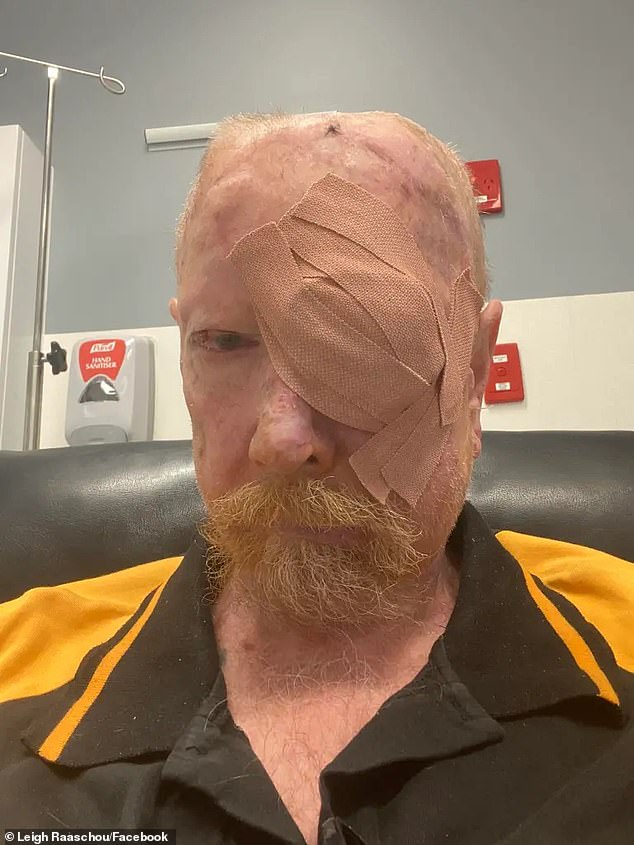

Photos of Mr. Raaschou show him covered in scars and blemishes as a result of skin cancer.
“We’re probably looking at something topical or subcutaneous under the skin that will deliver the drug directly to the target cells.”
Australia has the highest rates of skin cancer in the world. Each year, more than 11,500 Australians are diagnosed with melanoma, while an estimated 434,000 people receive treatment for non-melanoma skin cancers.
About 2,000 Australians die from skin cancer each year.
